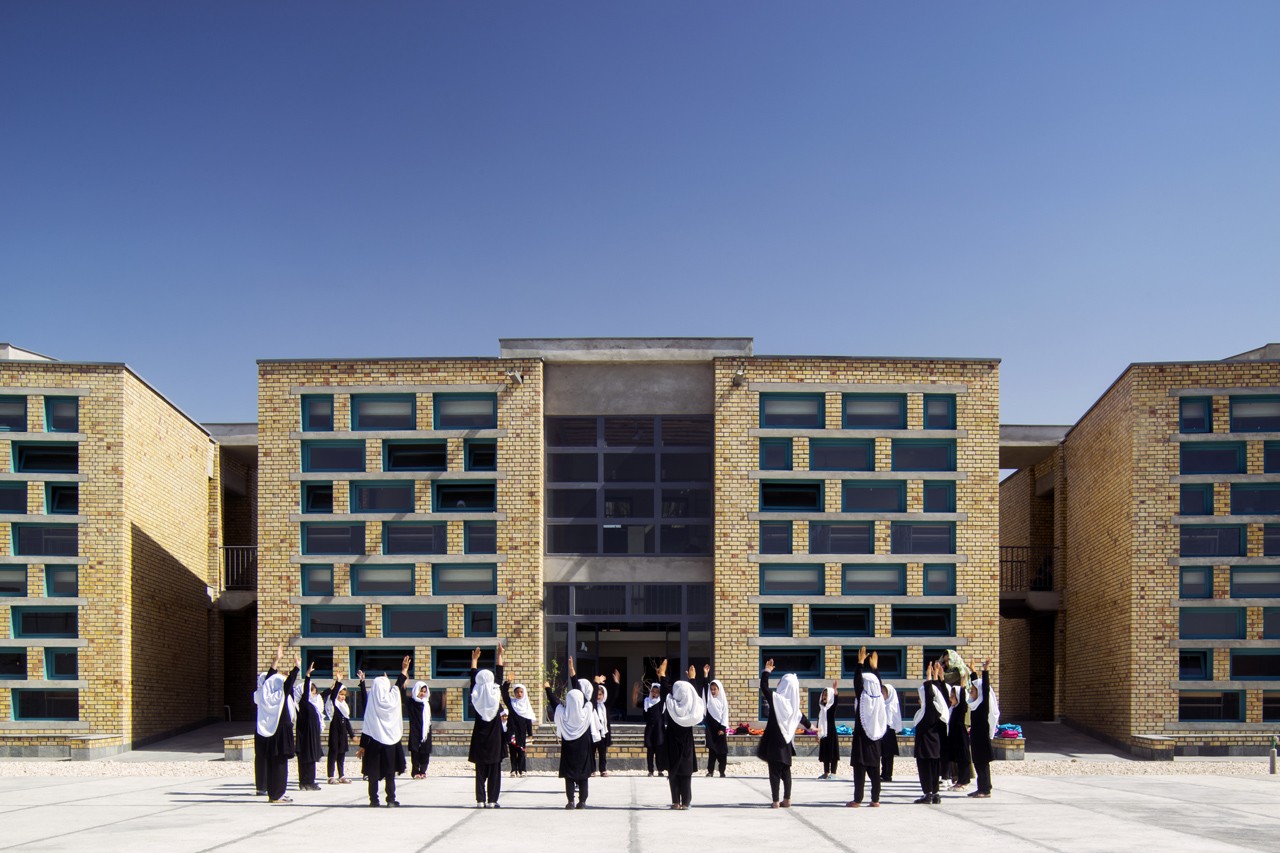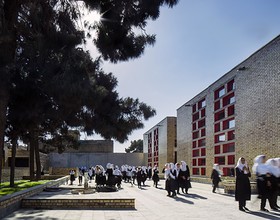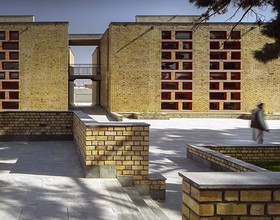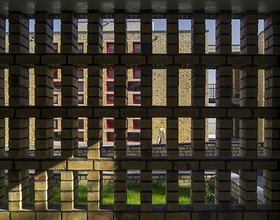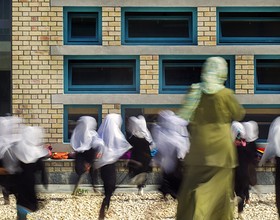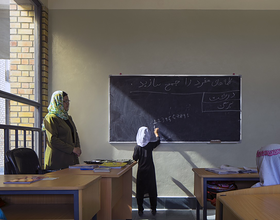GOHAR KHATOON GIRLS' SCHOOL
-
Located in Mazar-i-Sharif, Afghanistan’s fourth largest city, the Gohar Khatoon Girls’ School is an important urban center educating several thousand girls every day. Commissioned by the Balkh Province Ministry of Education, in partnership with a U.S. based non-profit organization, the school is integrated into the national education system expanding Afghanistan’s push toward the development of women and girls and their contribution and inclusion within Afghan society. Gohar Khatoon supports this process by promoting stability, comfort, and community engagement and has become a model for other girls’ schools in the country.
Promoting a sense of ownership was important for such a prominent neighborhood institution. The students, staff and community were involved throughout the design and construction phases. Visioning sessions with the students provided them with the opportunity to learn about their new school and to participate in the design process. Art was an important medium for engagement and was integrated into the design. Community involvement activity of the school design process included a national ‘women-only’ mural design competition. Six winning entries representing the spirit and hope of women in Afghanistan are displayed on walls throughout the school, with all program participants assisting professional artists in the installation of the artwork.
Schools in Afghanistan are often connected to a limited, or unstable power supply, and these institutions operate on almost no budget, often leaving insufficient funds for heating fuel. Built-in environmental strategies foster autonomy and self-sufficiency, and allow the school to perform under difficult circumstances using few resources. Capitalizing on low-tech climate responses results in a dependable institution that provides students and staff shelter and comfort for the long-term.
Photo credits: Miller Hull Partnership
1870 Projects

